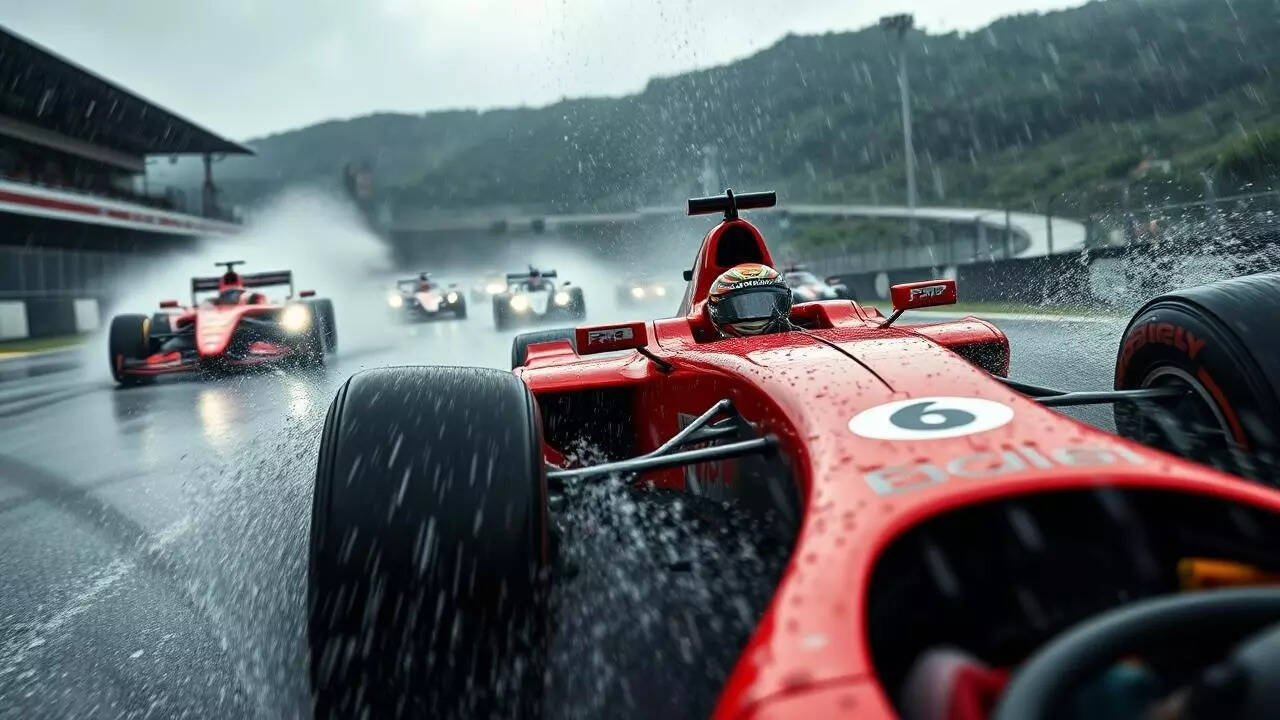From Storms To Glory: The Most Dramatic Wet Weather Battles In Brazil GP History
The Brazilian Grand Prix has long been one of Formula 1’s most unpredictable and emotionally charged events. Held at São Paulo’s Interlagos Circuit, the race has become synonymous with sudden downpours, breathtaking overtakes, and heart-stopping finishes. Over the decades, the combination of Brazil’s volatile weather and the circuit’s technical layout has created some of the sport’s most unforgettable moments, often redefining championship outcomes. From heroic drives to crushing heartbreaks, the Brazilian GP in the rain has delivered pure theatre for drivers and fans alike.

The Challenge of Interlagos
Situated 800 metres above sea level, the Interlagos Circuit presents a unique challenge due to its elevation and constantly shifting weather patterns. Drivers must navigate a mix of high-speed corners, sharp elevation changes, and unpredictable traction levels. When rain hits, these characteristics magnify dramatically, turning every lap into a battle for grip and control. The circuit’s anti-clockwise layout and bumpy asphalt further test physical endurance, making wet-weather races at Interlagos as mentally taxing as they are thrilling to watch.2003: The Chaos-Filled Thriller
The 2003 Brazilian Grand Prix remains one of the wildest races in F1 history. Heavy rain, standing water, and poor visibility combined to create chaos. Multiple drivers aquaplaned off at the same corner, leading to a series of red flags and safety cars. Amid the turmoil, Giancarlo Fisichella emerged as an unlikely victor for Jordan, after Kimi Räikkönen was initially declared the winner due to timing confusion. Hours later, the FIA officially confirmed Fisichella’s triumph — a fittingly unpredictable ending to a race where survival was the ultimate strategy.2008: Hamilton’s Last-Lap Glory
Perhaps no Brazilian Grand Prix has carried greater drama than the 2008 title decider. Lewis Hamilton entered the race needing a top-five finish to secure his first world championship, but torrential rain turned the event into a tactical minefield. Felipe Massa, racing in front of his home crowd, crossed the line first, seemingly champion — until Hamilton passed Timo Glock on the final corner of the final lap to snatch fifth place and the championship by a single point. The sight of Massa’s family celebrating, only to realise the title had slipped away seconds later, remains one of F1’s most emotional moments.2012: Vettel’s Miraculous Comeback
The 2012 Brazilian GP again proved why Interlagos is a magnet for drama. Sebastian Vettel’s bid for a third consecutive championship nearly unravelled when he collided with Bruno Senna on the opening lap, damaging his car and dropping to last place. With the track switching between wet and dry, strategy calls became decisive. Vettel clawed his way back through the field, finishing sixth — just enough to beat Fernando Alonso to the title. It was a testament to composure under pressure, amid rain-soaked unpredictability.2016: Verstappen’s Rain Masterclass
The 2016 race was another classic, with relentless rain forcing multiple red flags and safety car periods. As others struggled, a young Max Verstappen produced one of the most impressive wet-weather drives of modern times. From near the back of the grid after a late pit stop, he surged to third with audacious overtakes around the outside — earning comparisons to legends like Senna and Schumacher. The race underlined Verstappen’s exceptional skill in the wet and revived Brazil’s reputation as the ultimate proving ground for great drivers.Why Brazil’s Wet Races Captivate Fans
Part of the Brazilian GP’s enduring appeal lies in its unpredictability. The track’s microclimate can switch from sunshine to torrential rain within minutes, forcing teams into split-second decisions on tyre changes and fuel strategy. Wet conditions neutralise car advantages, allowing driver talent and intuition to shine through. Fans have learned to expect the unexpected — from last-lap heartbreaks to unexpected podiums — making Brazil’s rain-hit races a symbol of Formula 1’s raw emotion and risk.The Legacy of Rain and Glory
Over the decades, the Brazilian Grand Prix has delivered everything from chaotic crashes to crowning moments of triumph. Rain has often served as the great equaliser, turning calculated races into survival tests. Interlagos continues to remind the world that Formula 1, at its best, is not just about machinery and speed but also about courage, precision, and the sheer unpredictability of nature. For fans, the stormy skies over São Paulo remain a beacon of drama, passion, and the unfiltered essence of racing.Next Story